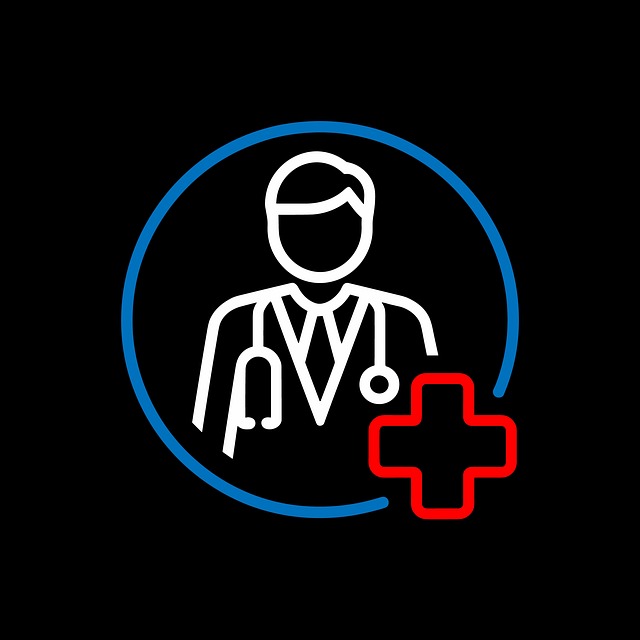“Unleash your body’s natural healing potential with regenerative post-operative care, a revolutionary approach to faster recovery. This comprehensive guide explores the power of non-invasive treatments, offering a glimpse into their transformative benefits. From understanding the fundamentals to uncovering key components and integrating complementary therapies, we delve into strategies that can significantly enhance post-surgery outcomes. Discover real-life success stories and learn how these innovative techniques are changing the landscape of post-operative care.”
- Understanding Regenerative Post-Op Care: A Non-Invasive Approach
- Benefits of Choosing Non-Invasive Post-Operative Treatment
- Key Components of an Effective Regenerative Post-Op Protocol
- Integrating Complementary Therapies for Faster Recovery
- Success Stories: Real-Life Examples of Accelerated Healing
Understanding Regenerative Post-Op Care: A Non-Invasive Approach

Regenerative Post-Op Care represents a revolutionary, non-invasive approach to accelerating healing after surgery. Unlike traditional recovery methods that often involve extensive downtime and potential side effects, this innovative strategy leverages the body’s natural ability to heal itself. By stimulating cellular regeneration and tissue repair, regenerative treatments can significantly shorten recovery periods and improve patient outcomes.
Non-invasive post-op treatment options include various techniques such as platelet-rich plasma (PRP), stem cell therapy, and advanced topical creams. These methods are designed to promote blood flow, reduce inflammation, and enhance collagen production—all crucial factors in fast-tracking the healing process without the need for invasive procedures or lengthy rehabilitation.
Benefits of Choosing Non-Invasive Post-Operative Treatment

Choosing non-invasive post-operative treatments offers a multitude of benefits for faster and more comfortable recovery. Unlike traditional surgical methods, these innovative approaches focus on the body’s natural healing mechanisms rather than extensive interventions. By stimulating tissue regeneration and promoting cellular repair, non-invasive post-op care reduces the risk of complications and minimizes patient discomfort.
This type of treatment is particularly advantageous as it avoids the lengthy hospital stays and invasive procedures associated with conventional post-surgery recovery. Patients can often return to their daily routines quicker, experience less pain, and exhibit improved overall healing outcomes. Non-invasive methods such as platelet-rich plasma (PRP) therapy or stem cell treatments are revolutionizing post-operative care, ensuring patients receive the best possible support for a swift and efficient healing process.
Key Components of an Effective Regenerative Post-Op Protocol

An effective regenerative post-op protocol should incorporate a multi-faceted approach to promote faster healing and enhance patient recovery. Key components include non-invasive treatments such as platelet-rich plasma (PRP) therapy, which utilizes the patient’s own blood to accelerate tissue repair and reduce inflammation. Additionally, incorporating strategies like negative pressure wound therapy can create an optimal environment for healing by removing excess exudate and promoting epithelialization.
Other vital elements involve nutrition support with tailored supplements, ensuring adequate intake of essential nutrients like collagen-boosting vitamins and minerals. Physical therapy exercises designed to improve circulation and range of motion are also crucial. Moreover, stress management techniques can significantly impact recovery, as stress hormones delay healing processes. Therefore, a comprehensive post-op care plan should address these aspects holistically for optimal results.
Integrating Complementary Therapies for Faster Recovery

Integrating Complementary Therapies for Faster Recovery
In addition to conventional medical care, complementary therapies offer a natural and non-invasive post-op treatment approach that can significantly enhance healing. Techniques such as acupuncture, massage therapy, and herbal remedies have been scientifically studied and proven effective in promoting faster recovery times. Acupuncture, for instance, stimulates specific points on the body to release natural painkillers and reduce inflammation, expediting the healing process.
Massage therapy helps improve circulation, reducing swelling and promoting the delivery of essential nutrients to injured areas. Herbal remedies, carefully selected based on their anti-inflammatory or antimicrobial properties, can aid in wound care and infection prevention. Combining these non-invasive post-op treatment methods with conventional care allows for a holistic approach to healing, addressing physical, emotional, and mental aspects of recovery for optimal patient outcomes.
Success Stories: Real-Life Examples of Accelerated Healing

In the realm of modern healthcare, success stories abound thanks to innovative approaches like non-invasive post-op treatment. Real-life examples highlight remarkable instances of accelerated healing, where patients experience faster recovery times and reduced discomfort following surgical procedures. These cases serve as a testament to the power of integrating regenerative therapies into standard post-operative care.
One such story involves a patient who underwent a delicate arthroscopic procedure on their knee. With traditional recovery methods, they might have faced weeks of limited mobility and persistent pain. However, by incorporating a specialized non-invasive post-op treatment regimen, including targeted laser therapy and biofeedback techniques, the patient experienced significant improvements. Within just a few days, they reported reduced inflammation, enhanced joint mobility, and a noticeable decrease in pain levels—a clear departure from typical recovery trajectories.
